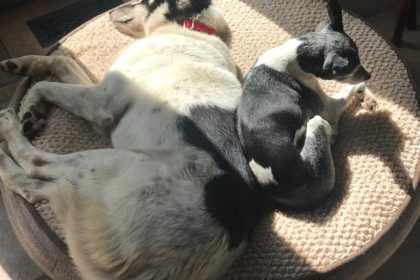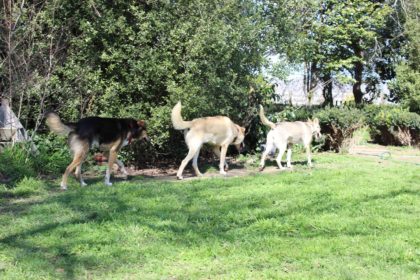While working on one of Aliy’s toboggans yesterday for a trip to the North Slope, the one she used to win the Yukon Quest International Dog Sled Race, I started thinking about the number of broken sleds in this year’s Iditarod. Broken sleds are nothing new. Trees frequently jump into the way of an oncoming sled. A few years back Jack Berry’s sled was stomped by a moose in the Yukon Quest. My guess is that more of the sled breakage this year is caused by the hard, uneven trail conditions than unintended encounters with trees or large animals.
The type of sled failure most common with these trail conditions starts as a stress fracture in a runner near a weight supporting stanchion. Once weakened the runner literally snaps off. All sleds have a point on their runners where the weight of the sled and its load applies a torque to the runners in one direction and the weight of the driver applies a torque in the opposite direction. Sleds with rear driver’s seats add more torque in the direction applied by the driver. Heavier loads and heavier drivers both apply more torque. Similar break patterns occur with sleds that have older type driver’s seats. These are bicycle seats on a post that pivot just above the point where the handle bars attach to the runners. The driver’s weight is partially supported by a backwards pull on the handle bars. This pull creates a large amount of torque where the handle bars attach to the runner.
The solution that frequently comes to mind is to make the runners stronger in these areas of high stress. The thought is that this would make the runners less likely to break. Actually, stronger (and thus stiffer) runners make the problem worse. The better simple solution is to design the stanchion attachment so that the stress it transmits is spread over more of the runner’s length. Allen had broken the runners on his Prairie Built sled a year ago. The company sent him two new runners and a long piece of plastic for each. This plastic was to be inserted into the runner under the stanchion attachment. The plastic insert would spread the stress over a longer part of the runner. This fix has worked fine, but it does create “hard spots” in the runners that may some day exhibit the same problem.
The best solution is to make the runners more flexible and at the same time build them to spread the stress of the stanchions over a broader area. A more flexible runner would not only reduce runner breakage, it would also reduce the shock loads and vibrations that are transmitted to both the dog team and the driver. These shock loads and vibrations are a major cause of injury and fatigue to the team and the driver.
Z









Word to the Z